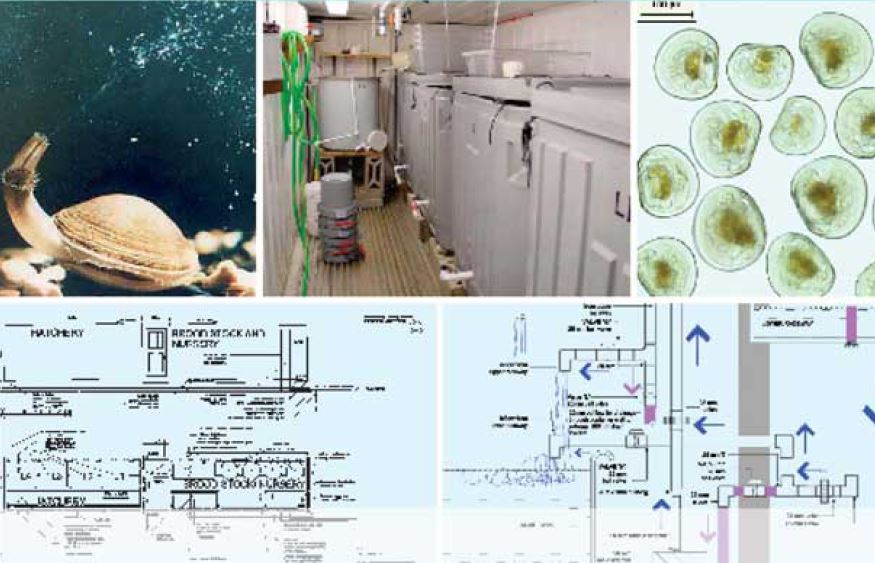Installation and operation of a modular bivalve hatchery
Installation and operation of a modular bivalve hatchery

Cover photographs and drawings:
Clockwise from top left: A spawning female Manila clam (courtesy of Brian Edwards); interior of a small bivalve hatchery; photomicrograph of six-day old sand scallop (Euvola ziczac) larvae; technical layout plan of a modular bivalve hatchery; technical detail of a semi-recirculating nursery raceway system (drawings by Souhaila Sarkis).
Prepared by
Samia Sarkis
FAO Consultant
Bermuda
Compiled and edited by
Alessandro Lovatelli
FAO Inland Water Resources and Aquaculture Service
FOOD AND AGRICULTURE ORGANIZATION OF THE UNITED NATIONS Rome, 2007
FAO
FISHERIES TECHNICAL PAPER
The mention or omission of specific companies, their products or brand names does not imply any endorsement or judgement by the Food and Agriculture Organization of the United Nations.
The designations employed and the presentation of material in this information product do not imply the expression of any opinion whatsoever on the part of the Food and Agriculture Organization of the United Nations concerning the legal or development status of any country, territory, city or area or of its authorities, or concerning the delimitation of its frontiers or boundaries.
ISBN 978-92-5-105595-3
All rights reserved. Reproduction and dissemination of material in this information product for educational or other non-commercial purposes are authorized without any prior written permission from the copyright holders provided the source is fully acknowledged. Reproduction of material in this information product for resale or other commercial purposes is prohibited without written permission of the copyright holders. Applications for such permission should be addressed to:
Chief
Electronic Publishing Policy and Support Branch
Communication Division
FAO
Viale delle Terme di Caracalla, 00153 Rome, Italy
or by e-mail to:
Этот адрес электронной почты защищён от спам-ботов. У вас должен быть включен JavaScript для просмотра.
© FAO 2007